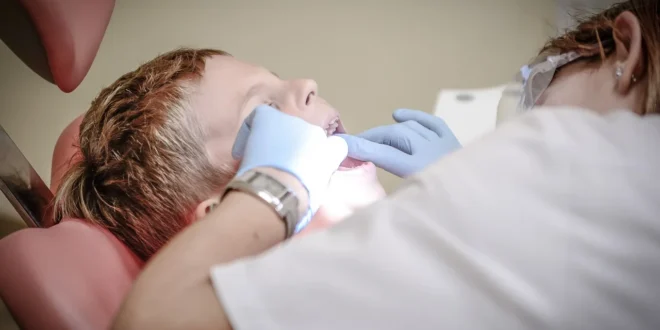A child’s smile is a precious sight, radiating joy and innocence. Ensuring those little smiles remain healthy and bright involves more than just regular brushing and flossing. As parents, guardians, or caregivers, you often seek effective ways to safeguard your children’s dental health. Amidst various approaches, using probiotics for kids has emerged as an innovative and promising method. These tiny superheroes, known for their positive impact on gut health, are recognized for their potential role as smile guardians, supporting dental health in unique ways.
- Understanding the Foundation: Oral Health and Its Importance
- The Emergence of Probiotics in Dental Care
- Targeting Troublemakers: How Probiotics Work in the Mouth
- Supporting Evidence: Scientific Backing for Probiotics in Dental Health
- Incorporating Probiotics into Children’s Dental Care Routine
- Nurturing Smiles: A Holistic Approach to Children’s Well-Being
- Enhancing Compliance and Convenience
- Embracing the Role of Smile Guardians
Understanding the Foundation: Oral Health and Its Importance
The foundation of oral health is laid in childhood. Early habits, such as brushing teeth twice daily, regular dental check-ups, and a balanced diet, are crucial in preventing dental issues. While these practices are essential, maintaining a healthy balance of good bacteria in the mouth is equally important. The oral cavity is home to various microorganisms, including beneficial and harmful bacteria. Ensuring a balance that favors beneficial bacteria is vital for oral health, as it helps fight off the harmful bacteria that cause cavities, gum disease, and other dental problems.
The Emergence of Probiotics in Dental Care
Probiotics have gained considerable attention for their role in promoting gut health, aiding digestion, and supporting the immune system. However, recent research has unveiled another facet of these friendly bacteria: their potential to positively influence oral health. Probiotics specifically designed for kids contain strains of beneficial bacteria, such as Lactobacillus and Bifidobacterium, which can colonize the oral cavity and compete against harmful bacteria. By crowding out the harmful bacteria, probiotics create a healthier oral environment, potentially reducing the risk of cavities and gum disease.
Targeting Troublemakers: How Probiotics Work in the Mouth
The mouth is a gateway to the body, and maintaining a healthy balance of oral bacteria is crucial. Probiotics function by adhering to the surfaces within the oral cavity, including teeth and gums. These friendly bacteria compete for space and nutrients with harmful bacteria, ultimately reducing their ability to thrive. Moreover, certain strains of probiotics produce natural substances like hydrogen peroxide, which have antimicrobial properties, further inhibiting the growth of harmful bacteria. This creates an environment where the balance tilts in favor of oral health, contributing to stronger teeth and healthier gums.
Supporting Evidence: Scientific Backing for Probiotics in Dental Health
Numerous studies have explored the potential of probiotics in supporting oral health, especially in children. Research has shown that regular intake of probiotics can reduce the levels of cavity-causing bacteria, such as Streptococcus mutans, in the mouth. Furthermore, some studies indicate that probiotics may help reduce plaque formation, promote healthier gums, and even reduce bad breath. While more research is ongoing, these findings highlight the promising role that probiotics can play in maintaining children’s dental health.
Incorporating Probiotics into Children’s Dental Care Routine
Integrating probiotics into a child’s dental care routine is relatively simple. Probiotics are available in various forms, including chewable tablets, powders, and even certain types of yogurt. Consulting a pediatrician or a dental professional can help select the most suitable probiotic product based on a child’s age and specific dental needs. Adding probiotics to a child’s daily regimen can complement existing oral hygiene practices, potentially enhancing the overall dental health of the little ones.
Nurturing Smiles: A Holistic Approach to Children’s Well-Being
The journey toward maintaining optimal dental health in children involves a multifaceted approach. Alongside regular dental check-ups, teaching good oral hygiene practices, and encouraging a balanced diet, including probiotics is a valuable addition. By nurturing the delicate balance of oral bacteria, probiotics contribute to a holistic approach to safeguarding the precious smiles of our children.
Enhancing Compliance and Convenience
Probiotics contribute to oral health and offer a convenient and palatable way to supplement a child’s routine. Various forms like chewable tablets or flavored powders often appeal to children’s tastes, making it easier to incorporate into their daily habits. This convenience enhances compliance, as children may be more willing to take these supplements regularly, ensuring a consistent intake for improved oral health. The ease of use and pleasant flavors associated with probiotics make them a practical and enjoyable addition to a child’s dental care regimen, contributing to long-term oral health benefits.
Embracing the Role of Smile Guardians
As smile guardians, probiotics offer a new dimension in supporting dental health. Their ability to foster a healthy oral environment by promoting beneficial bacteria makes them a promising addition to a child’s dental care routine. As caregivers, recognizing the potential of these friendly bacteria in maintaining healthy smiles allows us to embrace a proactive approach toward our children’s well-being.
Conclusion
The emergence of probiotics in dental care presents an exciting avenue for promoting children’s dental health. By incorporating these friendly bacteria into a child’s routine, you take a proactive step toward nurturing their smiles and fostering a healthy oral environment. Probiotics for kids stand as invaluable allies in the quest for brighter, healthier smiles, serving as the guardians of our children’s precious grins.
If you enjoyed this article and want to learn more about health topics, explore the rest of our blog today.
 SlushWeb Bringing Facts to Light
SlushWeb Bringing Facts to Light



